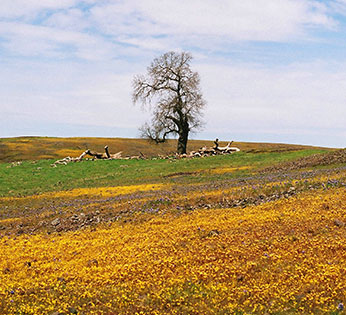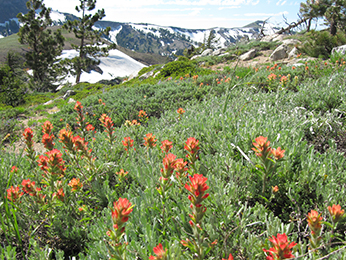 CDFW photo by Billie Wilson.
CDFW photo by Billie Wilson.
 CDFW photo by Holly Gellerman.
CDFW photo by Holly Gellerman.
The NCCP Act inherently includes principles to help accommodate climate change. NCCPs are intended to protect large habitat reserves which are connected to each other, and connected to adjacent conserved lands, to sustain effective movement of wildlife. NCCP reserves are also intended to support a range of environmental gradients and include high habitat diversity. As such, these NCCP principles should allow species to adapt to climate change, allowing shifts in distributions, adapting to new habitats, and/or utilizing protected refugia. NCCPs must also include monitoring and adaptive management, which will help reserve managers change strategies based on new information and monitoring data.
Since the NCCP Act requires that an NCCP “conserve” the covered species in the Plan area, effectively requiring their “recovery” within the Plan area, it is imperative that the Plan consider climate change and how it may affect the persistence and viability of covered species within the Plan area. This requires a more deliberate analysis of climate change and its effects on species and habitats, beyond abiding by the basic NCCP principles (as described above). Climate change should therefore be considered throughout the planning process, as described in
Climate-Smart Conservation guidance. Below are suggested ways to incorporate climate change into NCCPs:
- Consider how climate change may affect the time scale and geographic scope of the Plan
- Make goals and objectives climate-focused and forward-thinking where possible, such that the Plan helps species and communities adapt to climate change, rather than merely conserving them
- Use vulnerability assessments to help select and prioritize covered species and conserved natural communities - see list of potential resources below
- Use predicted species distributions under projected climate change scenarios to help with Reserve system design, to maximize refugia and connectivity for covered species, and prioritize lands for adaptation actions (such as habitat restoration) and acquisition – see list of potential resources below
- Incorporate species and natural community reactions/adaptations to climate change into the monitoring and adaptive management process by determining which variables to measure over time to see if climate change is impacting species, and include possible future management approaches to help improve adaptation based on monitoring results
Potential resources
Below are some potential resources to use when incorporating climate change into NCCPs as described above. CDFW does not endorse any specific resources - these links are for informational purposes only. Resources listed below are not an exhaustive list but rather a sampling of existing information. There is no right way to incorporate climate change data. The main idea is to go through a critical-thinking process and to be transparent about how decisions and conclusions were made. Also, there is a lot of data and guidance available, so you don’t necessarily need to re-invent the wheel – someone may have already conducted analyses or created models that you can use.
Potential Resources for Vulnerability Assessments
Potential Resources for Reserve Design and Adaptation Actions
Other Potential Climate Change Resources - General